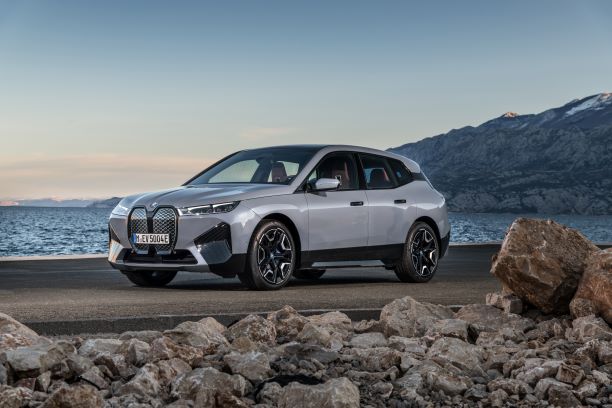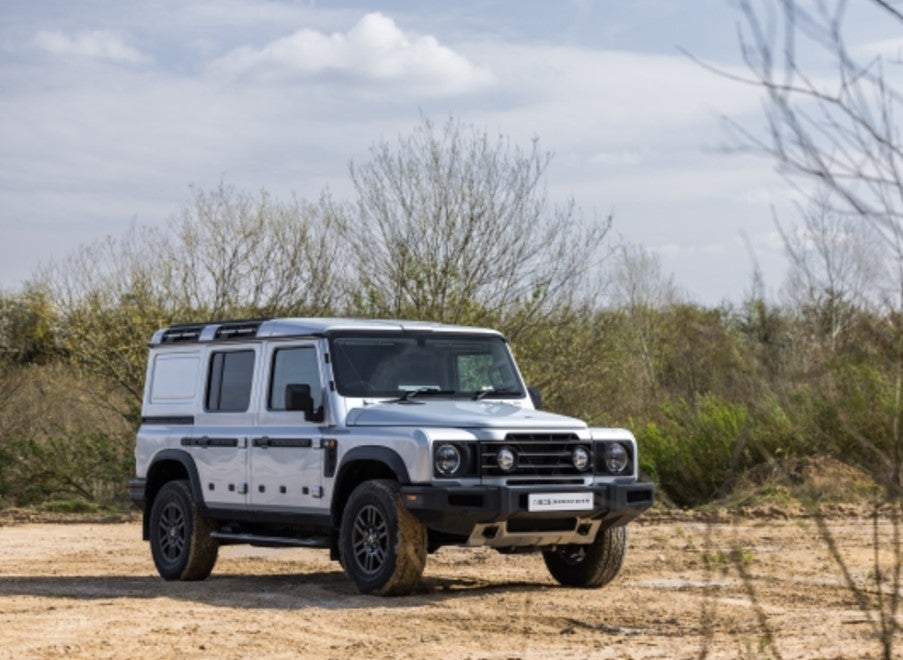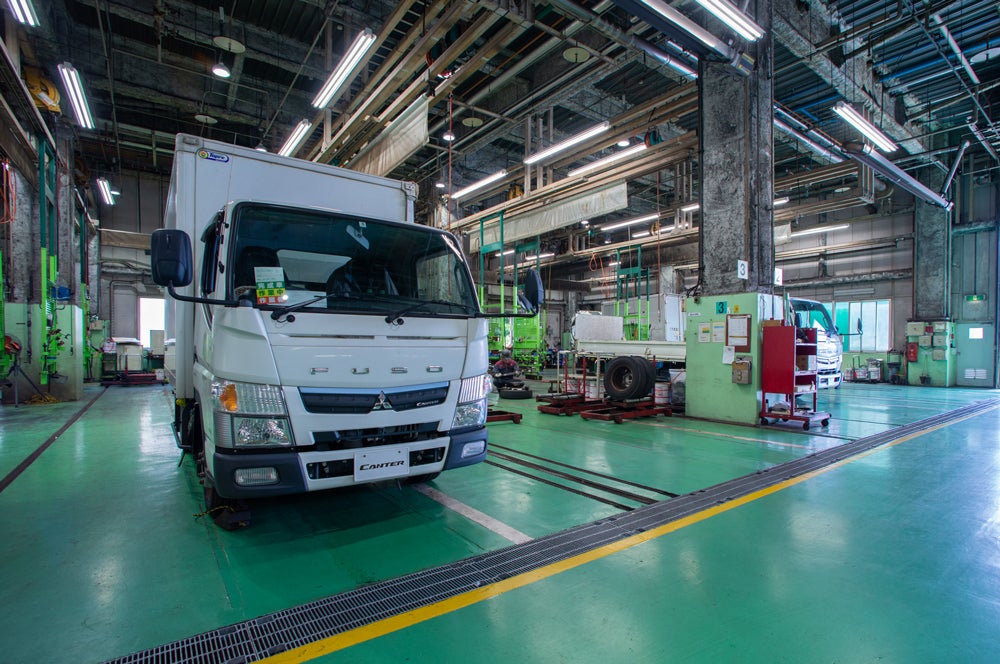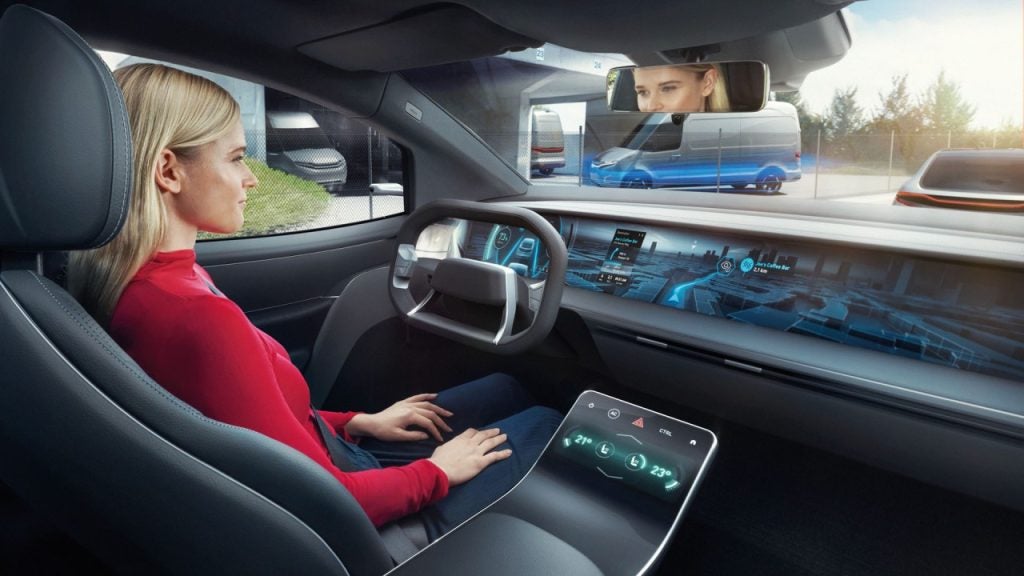
BMW says its flagship electric SUV – the BMW iX – is ready for series production and is on track for market launch from November 2021.
The iX is described by BMW as a technology flagship that is based on a new toolkit for the future, with ‘vast potential for innovations in the areas of automated driving, operation, connectivity and digital services’ which translates into a ‘premium mobility experience unparalleled in this segment’.
The BMW iX will be launched with a choice of two model variants. Both are equipped with an electric all-wheel-drive system, with combined output of 385 kW/523 hp in the BMW iX xDrive50 (electric power consumption combined in the WLTP cycle: 23.0 – 19.8 kWh/100 km [62 miles]; CO2 emissions: 0 g/km) and 240 kW/326 hp in the BMW iX xDrive40 (electric power consumption combined in the WLTP cycle: 22.5 – 19.4 kWh/100 km [62 miles]; CO2 emissions: 0 g/km). The drive technology’s efficiency paired to the very latest battery cell technology results in WLTP-calculated ranges of up to 630 kilometres (391 miles) in the BMW iX xDrive50 and up to 425 kilometres (264 miles) in the BMW iX xDrive40. Also set to join the model line-up at a later date is the BMW iX M60 (electric power consumption combined in the WLTP cycle: 21.6 kWh/100 km [62 miles]; CO2 emissions: 0 g/km) with a maximum output in excess of 440 kW/600 hp that promises an exceptionally sporty all-electric driving experience. (The figures relating to motor output and energy consumption for the BMW iX M60 are predicted values based on the car’s current stage of development.)
The aluminium spaceframe construction and the ‘Carbon Cage’ use of carbon fibre-reinforced plastic (CFRP) in the roof and at the sides and rear result in a material mix that BMW says increases rigidity at the same time as minimising weight. The optimised aerodynamic properties that contribute to the car’s drag coefficient of just 0.25 also have a positive impact on efficiency and range, it says. The high-voltage battery located low down in the car’s underbody lowers the centre of gravity, combining with the even weight distribution to make handling more nimble.
The standard chassis technology for the BMW iX comprises a double-wishbone front axle, five-link rear axle, lift-related dampers and an electric steering system with Servotronic function and a variable ratio. Two-axle air suspension with electronically controlled dampers, Integral Active Steering and Sport brakes can all be found on the options list. As an alternative to the standard 20-inch light-alloy wheels, there is a choice of 21-inch and 22-inch Air Performance Wheels. These can be fitted with noise-reduced tyres, which have a layer of foam on their inner surface to improve acoustic comfort.
Electric all-wheel drive
How well do you really know your competitors?
Access the most comprehensive Company Profiles on the market, powered by GlobalData. Save hours of research. Gain competitive edge.

Thank you!
Your download email will arrive shortly
Not ready to buy yet? Download a free sample
We are confident about the unique quality of our Company Profiles. However, we want you to make the most beneficial decision for your business, so we offer a free sample that you can download by submitting the below form
By GlobalDataThe electric all-wheel-drive system in the BMW iX enables fully variable power transmission ranging from highly efficient pure rear-wheel drive through to an all-wheel-drive set-up that maximises traction.
The near-actuator wheel slip limitation technology fitted in tandem with all-wheel drive for the first time brings about a further improvement in traction and handling stability, it is claimed. The BMW iX xDrive50 posts acceleration of 0 to 100 km/h (62 mph) in 4.6 seconds, while the BMW iX xDrive40 hits the same mark from rest in 6.1 seconds.
The fifth-generation BMW eDrive technology fitted in the BMW iX is centred around a drive unit which brings together the electric motor, power electronics and transmission within a single housing. It is claimed the highly integrated electric drive system topology has a beneficial effect on both power density and efficiency, at the same time as making highly economical use of the installation space in the area between the front and rear axle.
Both motors in the BMW iX work according to the principle of an electrically excited synchronous motor, where the excitation of the rotor is induced by the feed-in of electrical energy rather than fixed permanent magnets. This, BMW says, enables them to put their maximum torque on tap immediately on pulling away and maintain it over an extremely broad rev band. Combined torque peaks at 630 Nm (464 lb-ft) in the BMW iX xDrive40 and an even higher 765 Nm (564 lb-ft) in the BMW iX xDrive50.
BMW says adaptive recuperation gives a further boost to the efficiency and range of the BMW iX. Intelligently connected drive management means the intensity of the brake energy recuperation during overrun and active braking can be adapted to the road situation, as detected by data from the navigation system and the sensors used by the driver assistance systems. When approaching a junction, for example, the degree of recuperation can be increased, in order to feed energy back into the high-voltage battery while harnessing the deceleration effect at the same time. On the open road, meanwhile, the coasting function can take over, allowing the car to “freewheel” with no drive power whenever the driver eases off the accelerator.
High-voltage battery
Fifth-generation BMW eDrive technology also includes a high-voltage battery with the latest battery cell technology. Its volumetric energy density at cell level is up by around 40 per cent compared to the high-voltage battery in the 2020 BMW i3. The BMW iX xDrive50 is fitted with a high-voltage battery with a net energy content of 105.2 kWh (gross energy content: 111.5 kWh), while the battery unit for the BMW iX xDrive40 has a net energy content of 71 kWh (gross energy content: 76.6 kWh).
The standard specification of the BMW iX includes an integrated heating and cooling system for the cabin, together with its high-voltage battery and a drive system that operates using an exceptionally efficient heat pump function. Anticipatory thermal management enables the high-voltage battery’s operating temperature to be optimised for quick and efficient charging prior to a scheduled stop at a fast-charging station.
The Combined Charging Unit (CCU) in the BMW iX has been designed to offer a very high level of charging flexibility. DC power can be taken on board at a rate of up to 200 kW (BMW iX xDrive50) or 150 kW (BMW iX xDrive40). This allows the battery’s state of charge to be increased from 10 to 80 per cent in around 35 minutes in the BMW iX xDrive50 or 31 minutes in the case of the BMW iX xDrive40. What is more, range can be increased by up to 150 kilometres (93 miles) for the BMW iX xDrive50 and over 95 kilometres (59 miles) for the BMW iX xDrive40 in just ten minutes when they are plugged into a DC fast-charging station with an initial battery charge of 10 per cent. BMW iX models in Europe are supplied complete with a BMW Charging Card, the Flexible Fast Charger offering a charging rate of up to 11 kW and a mode 3 charging cable for public charging stations. The special tariff system offered by BMW Charging allows electrical power to be replenished at a very attractive price at both public charging stations and high-power charging stations.
ADAS
The new technology toolkit in the BMW iX offers considerable potential for driving forward the development of automated driving and parking functions, with the prospect of Level 3 functionality in the medium term, BMW says.
A new generation of sensors, a new software stack and a powerful computing platform provide the basis for exceptional intelligence. Five cameras, five radar sensors and 12 ultrasonic sensors are used to monitor the vehicle’s surroundings.
The BMW iX comes equipped with the most extensive set of standard driver assistance systems ever seen on a BMW along with a wealth of innovations. The front collision warning system, for instance, now detects oncoming traffic when turning left (in countries where vehicles drive on the right) as well as cyclists and pedestrians when turning right. Availability of the optional Steering and Lane Control Assistant has been significantly expanded, while the optional Active Cruise Control with Stop&Go function offers enhanced situational distance adjustment. The exit warning function, which alerts to the presence of cyclists or pedestrians in the surrounding area before the doors are opened, and the Remote Theft Recorder are both new features. Also to be found on the standard equipment list for the BMW iX is the Parking Assistant including Reversing Assist Camera and the Reversing Assistant.
In addition to acoustic pedestrian protection, the BMW iX also features a specially composed drive sound, which adds to the thrill of the driving experience by providing authentic feedback in response to accelerator movements and speed. The BMW IconicSounds Electric function included as standard also allows new sound variants from a collaboration with film score composer Hans Zimmer to be added to the acoustic repertoire.
The BMW iX will be produced at BMW Group Plant Dingolfing. Both the vehicle itself and the battery cells will be manufactured using green power across the board. The BMW Group procures the cobalt and lithium required for the high-voltage batteries from controlled sources in Australia and Morocco and delivers it to the battery cell manufacturers. The design principle for the electric motors allows the use of rare earth metals to be avoided in the drive system rotors. Added to which, the company sources aluminium produced using power from solar energy plants.
A high proportion of secondary aluminium and reused plastic also contribute to the resource-efficient production of the BMW iX. Its interior uses FSC-certified wood, leather tanned with olive leaf extracts and other natural materials. Recycled fishing nets are among the raw materials used for the floor coverings and mats.







